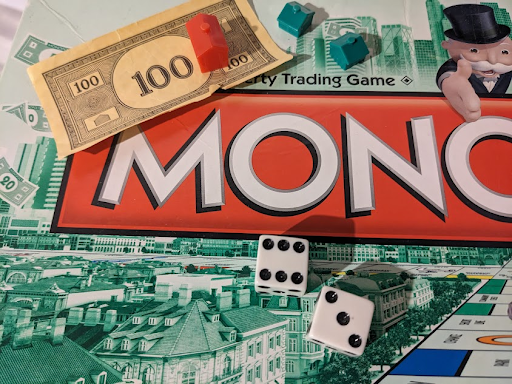Where the game originated and its popularity through the decades
Author’s Note: All research is credited to National Day Calendar, Britannica, The New Yorker, and The Fact Sight.
Monopoly is a trademark of childhoods around the world and is a phenomenon that can last well into adulthood. People of all ages still enjoy and love the board game of mortgages, buying and selling, and avoiding the Go To Jail cards and space.
The game is so popular that it has its very own national holiday on November 19th to honor the legacy it has served for the past century.
The game was originally curated in the 1930s by Charles B. Darrow, an unemployed heating engineer during the Great Depression. In 1935, he sold the idea for the game to the Parker Brothers.
Prior to this, homemade versions of the game circulated through the states, mostly based on Lizzie G. Magie’s The Landlord Game, which was patented in the 1900s. The element of similarity that was missing from the two games was that Magie didn’t have a monopoly factor.
The game boomed in popularity across the States, being voted America’s top game from 1940 to 1960, continuing to be famous for generations to follow and spreading across the globe. World tournaments are held for the best players to compete against one another for an international title.
The rules that the Parker Brothers and Darrow established were simple: collect as many properties as possible to collect rent from other players, pay your taxes and fees, and ultimately try to force the other players to go bankrupt. The winner is the last landlord standing.
Although these are the basic rules and each box comes with a set of rules just like any game, most households add their own spin on the rulebook to personalize the experience.
Over the years, thousands of versions of Monopoly have evolved from the original such as TV show themes, such as “Friends” or “The Office.” There are anniversary editions, versions from video games and movies, and even a North Dakota-opoly and a Fargo-opoly!
Monopoly’s popularity has grown since its humble origins in the 1930s. Today, the game has spread across the world. Over 111 countries have played and the game has been translated into at least 43 different languages, including a Braille version in 1970.
Monopoly has definitely left its legacy on the world. It continues to be a favorite for both young and old, often a way for family and friends to bond or get competitive with each other. Despite being nearly a century old, with the original game spanning back even further, it continues to be a legacy and novelty today.
